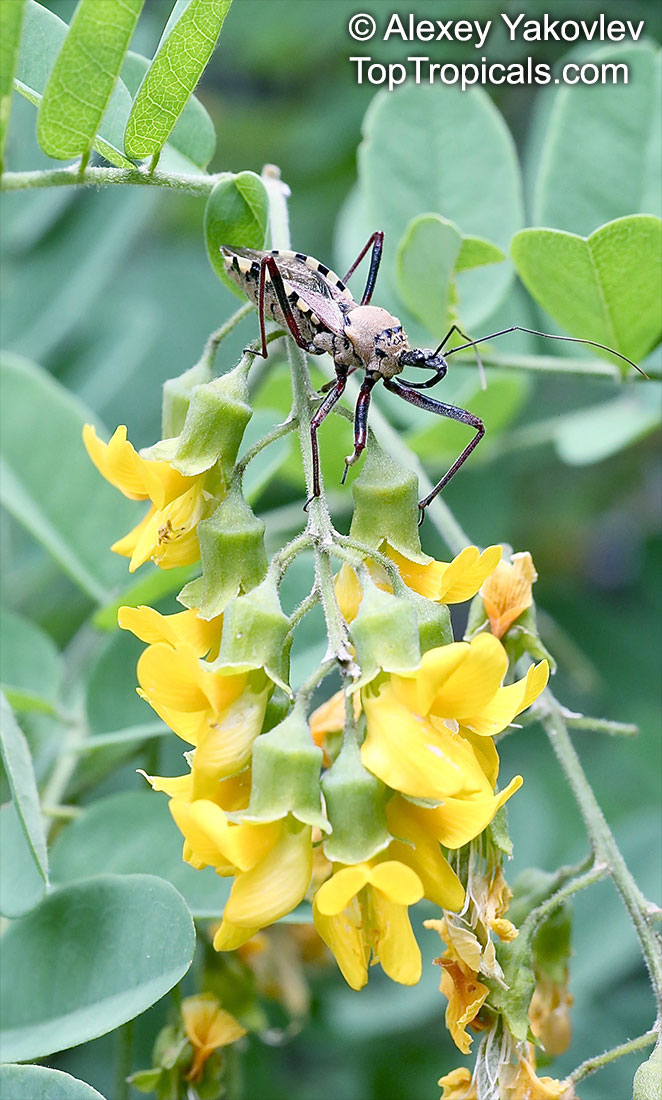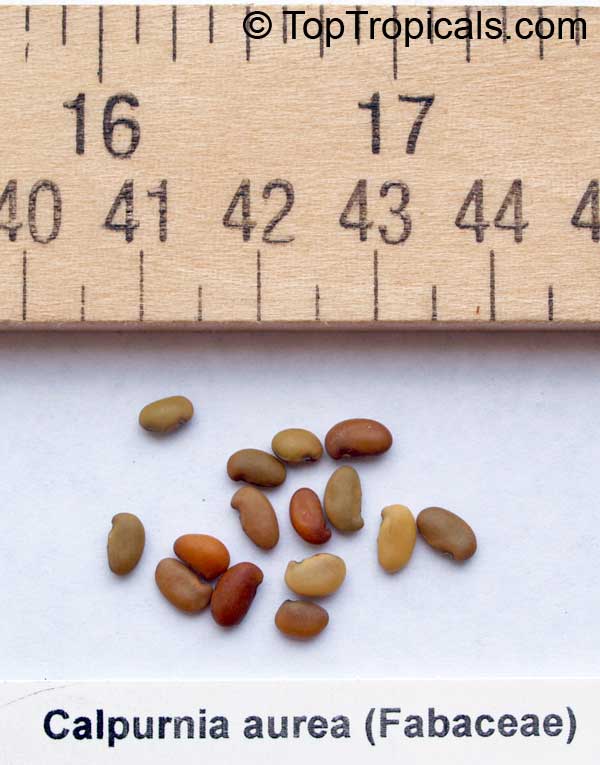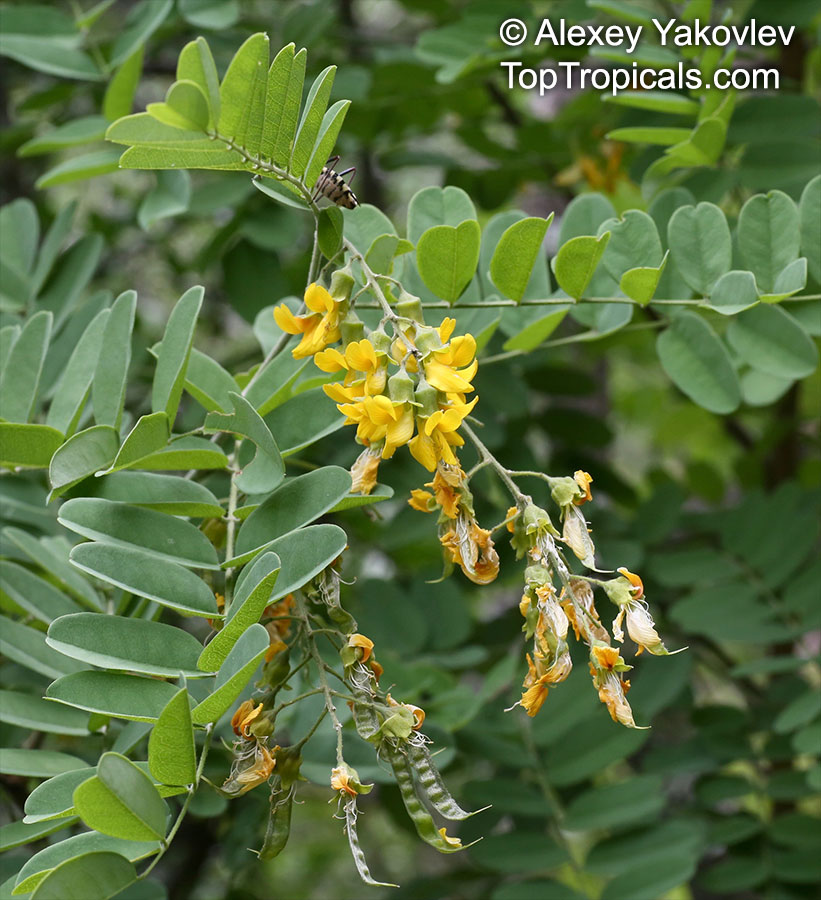Calpurnia aurea (Common Calpurnia)
Top Tropicals Plant Encyclopedia
Botanical name: Calpurnia aurea
Common names: Common Calpurnia, Wild Laburnum, Natal Laburnum
Family: Fabaceae
Subfamily: Faboideae
Origin: South Africa






This native of South Africa is a large shrub, which can reach up to 5-10 ft in height. It has attractive yellow and orange flowers, which are known to attract butterflies and hummingbirds, making it an invaluable addition to any garden. Furthermore, it is an important ethnomedical plant, providing valuable medicinal properties.
Calpurnia aurea grows best in full sun and can tolerate a variety of soil types and conditions. It requires moderate amounts of water when established, although it can tolerate periods of drought if adequate irrigation is not available. It is hardy in USDA Zones 9-11.
For those living in colder regions, Calpurnia aurea can also be grown in pots. In this case it should be brought indoors during the winter months, preferably to an area with plenty of sunlight. It should also be kept moist but not wet while being grown in a container. In the summer, move it from the house to a sheltered outdoor spot or patio, gradually exposing the plant to more direct sunlight. It should be watered regularly in order for the plant to survive and thrive.
If you are looking for a vibrant and ornamental shrub for your garden or patio, then Calpurnia aurea is an excellent choice. Not only does it attract beautiful birds and butterflies, but it is also easy to maintain and care for. Whether you're living in USDA Zones 9-11 or a colder region, Calpurnia aurea is sure to make a great addition to your outdoor space.


